How to Help Your Child Learn English at Home via Online Classes: Practical Tips and Fun Activities
How to Help Your Child Learn English at Home via Online Classes: Practical Tips and Fun Activities
Well, we all know that learning English opens countless doors for our kids. But finding effective ways to teach them at home can be tricky. Online classes nowadays have become a game-changer for busy families. It combines convenience with quality instruction. But how do we make sure these virtual lessons really stick and work?
As parents who navigated this journey, we have discovered that success goes beyond just logging in on time. From creating the perfect learning space to turning everyday moments into language opportunities, this article will take you through our tried-and-tested strategies that turn online English learning from a chore into an adventure your child will look forward to.
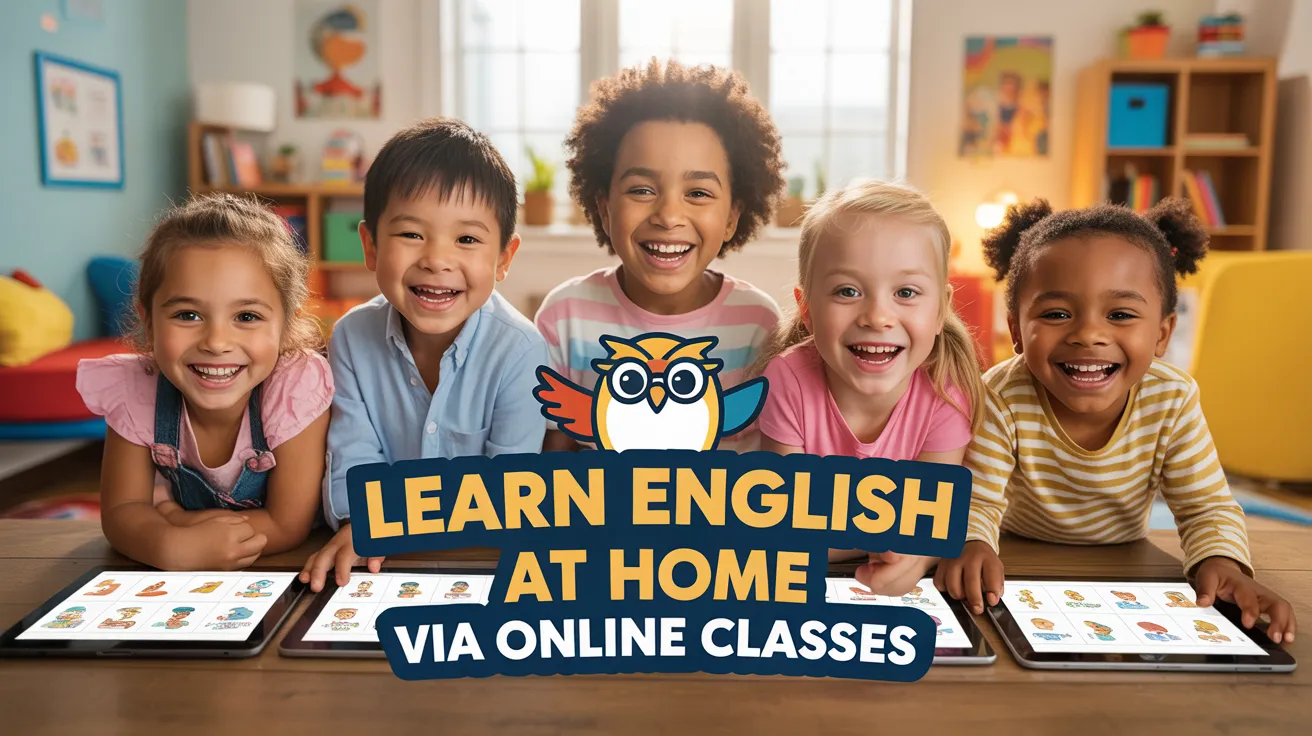
Why Online English Classes Are a Game-Changer for Kids?
Before we begin the tips in detail, we know you might be curious to know exactly why English matters so much. Well, the answer is quite well-known. In today’s global world, speakingEnglish fluently opens a number of doors for education, travel, and future careers. For children, learning English early builds strong English language skills that can shape their future in incredible ways.
But what if you're not fluent yourself? Or if English isn’t your family’s first language? That’s where home support and online English classescome together. Parents don’t need to be teachers. They just need encouragement, creativity, and the right tools, especially the magic of reading stories.
In this article, we will show how you can help your child learn English at home using fun routines, engaging classes, and story-based activities. From short stories to games and family talks, these practical tips are piled up to make learning English enjoyable and meaningful.
Practical Tips to Help Your Child Learn English at Home
Tip 1: Incorporate English Story Reading into Daily Routine
One of the simplest and most enjoyable ways to help your child learn English is by making storytime a regular part of your day. Choose colorful picture books or simple chapter books that match your child’s age and interests. Set aside a cozy spot- maybe a corner with cushions or a favorite chair, and let this be your special reading space.
As you read together, point to the words and pictures, and encourage your child to ask questions or guess what happens next. Don’t worry about reading perfectly. What matters most is sharing the experience and having fun with the stories. You can even take turns reading pages or acting out characters with silly voices. Over time, you will notice your child picking up new words, phrases, and even the rhythm of English sentences. More importantly, you will be building a love for stories and learning that will last a lifetime.
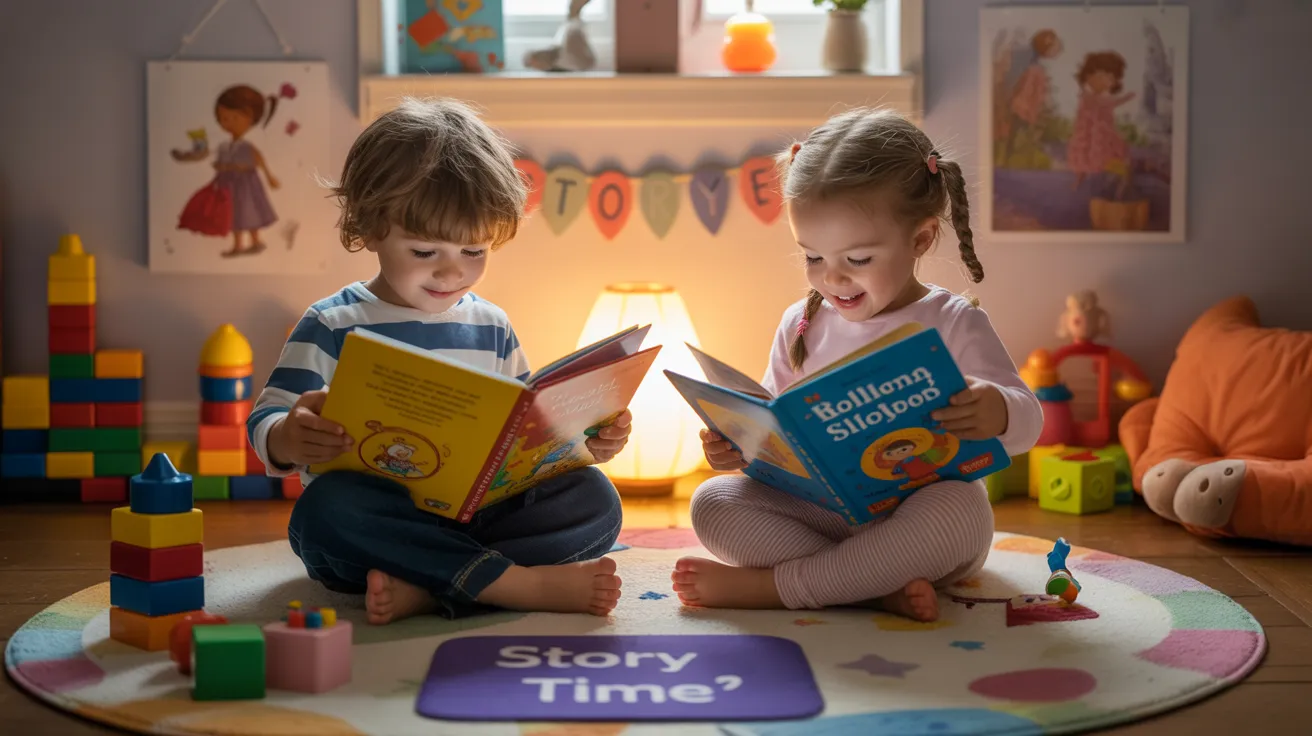
Tip 2: Use Fun Activities to Boost Your Child’s English Skills
Learning English doesn’t have to feel like homework. It can be a game! Try weaving English into playtime with simple, and enjoyable activities. For example, play word games like 'I Spy' using English words, or label everyday objects around the house with sticky notes. You can also sing catchy English songs together, or play charades using new vocabulary.
Arts and crafts are another great way to practice. While drawing or making something creative, talk about the colors, shapes, and steps in English. Even a simple scavenger hunt, where your child looks for items based on English clues, can turn learning into an adventure. The key is to keep things light and playful. When your child is having fun, they will be more eager to listen, speak, and try out new words without even realizing they are learning. These little moments add up, making English a natural and happy part of your child’s day.
Tip 3: Create a Dedicated English Learning Space at Home
Having a special spot at home just for English learning can make a big difference. It doesn’t need to be a whole room, even a small corner will do. Set up a comfy chair, a small table, or a mat, and keep some English books, flashcards, and coloring materials within easy reach.
Decorate the space with colorful posters, the alphabet, or your child’s own English drawings. You might even hang up a “word of the week” or a chart to track new words your child learns. The idea is to make this area inviting and exciting, so your child looks forward to spending time there.
When your child sits in their English corner, it shows that it’s time for stories, games, or songs in English. Over time, this routine helps your child feel comfortable and confident using English, and it turns learning into a fun part of their everyday life.
Fun Activities That Encourage Learning English Through Stories
Activity 1: Storytime Theater
Storytime Theater is a lively and imaginative way to bring stories to life. It will help your child develop their English skills in a meaningful way. You can start by reading a short story aloud with excitement, using different voices, facial expressions, and gestures to capture your child’s attention. After the story, create simple props or costumes together that relate to the characters or events in the story. Then, encourage your child to act out parts of the story, either alone or with family members.
This hands-on approach helps children connect words with actions and emotions, making the language more memorable and meaningful. Theater activities like these improve concentration, listening, and speaking skills while boosting confidence.
They also make storytelling a social and creative experience, which motivates children to participate and explore English naturally. You don’t need to worry about perfect acting; the goal is to have fun and immerse your child in the story’s world, helping them understand and use English in an engaging way.
Additional tips to enhance Storytime Theater include:
Using dramatic pauses to build suspense and invite your child to guess what happens next.
Repeating the story multiple times to reinforce vocabulary and comprehension.
Incorporating simple costumes or props to create a magical atmosphere.
Encouraging your child to take on different characters and voices.
This interactive method turns reading into a playful performance, making English learning enjoyable and memorable.
Activity 2: Create Your Own Short Story for Learning English
Encouraging your child to create their own short story is a fantastic way to spark creativity while practicing English. Sit down together with some paper, crayons, or markers, and start by choosing a simple theme or idea like a day at the park, a magical animal, or a fun adventure.
Help your child think of characters, places, and what might happen in the story. Write down their ideas in English, keeping sentences short and simple. You can also draw pictures to go along with the story, making it easier for your child to connect words with images.
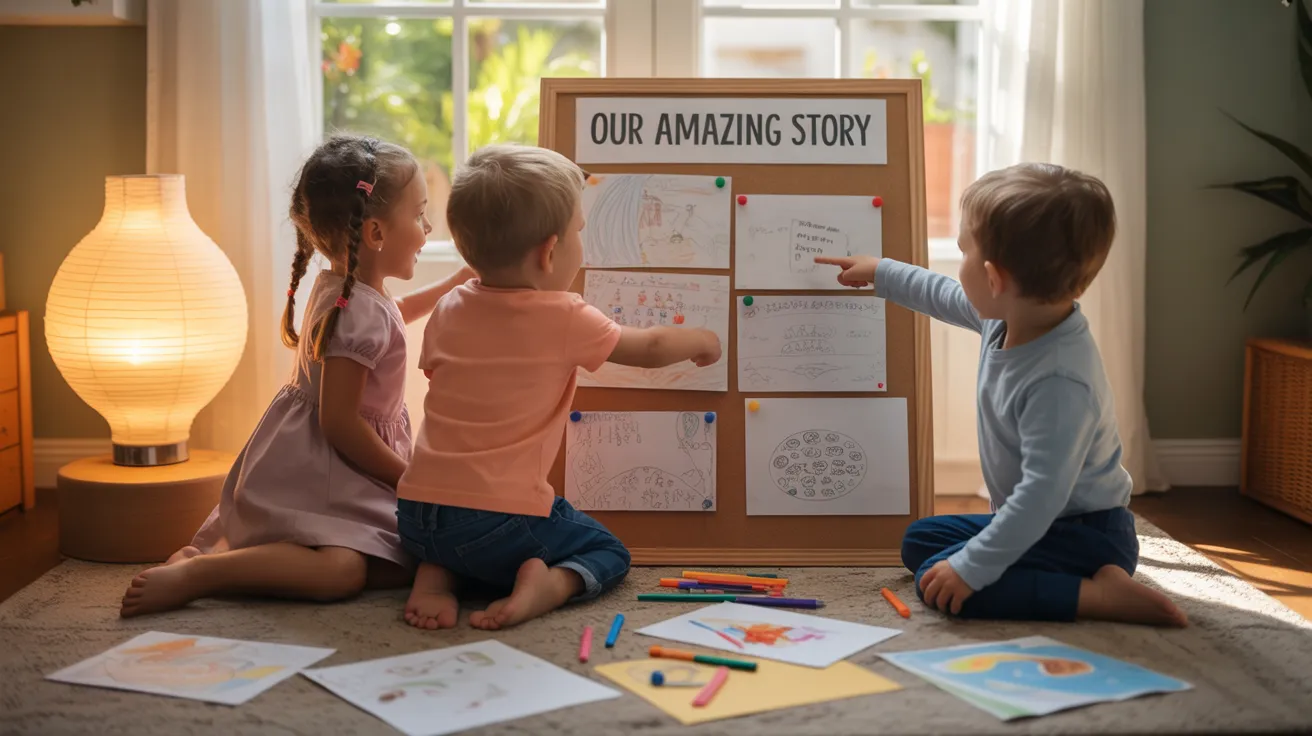
As your child tells the story aloud, gently guide them with new words or phrases, and celebrate their efforts with lots of praise. Give claps! This activity will not only build vocabulary and sentence skills but also boost confidence in speaking and storytelling.
Plus, creating their own stories makes English feel personal and exciting. It’s their very own world to explore! Over time, you can collect these stories in a special notebook or folder, turning it into a treasure trove of your child’s English learning journey.
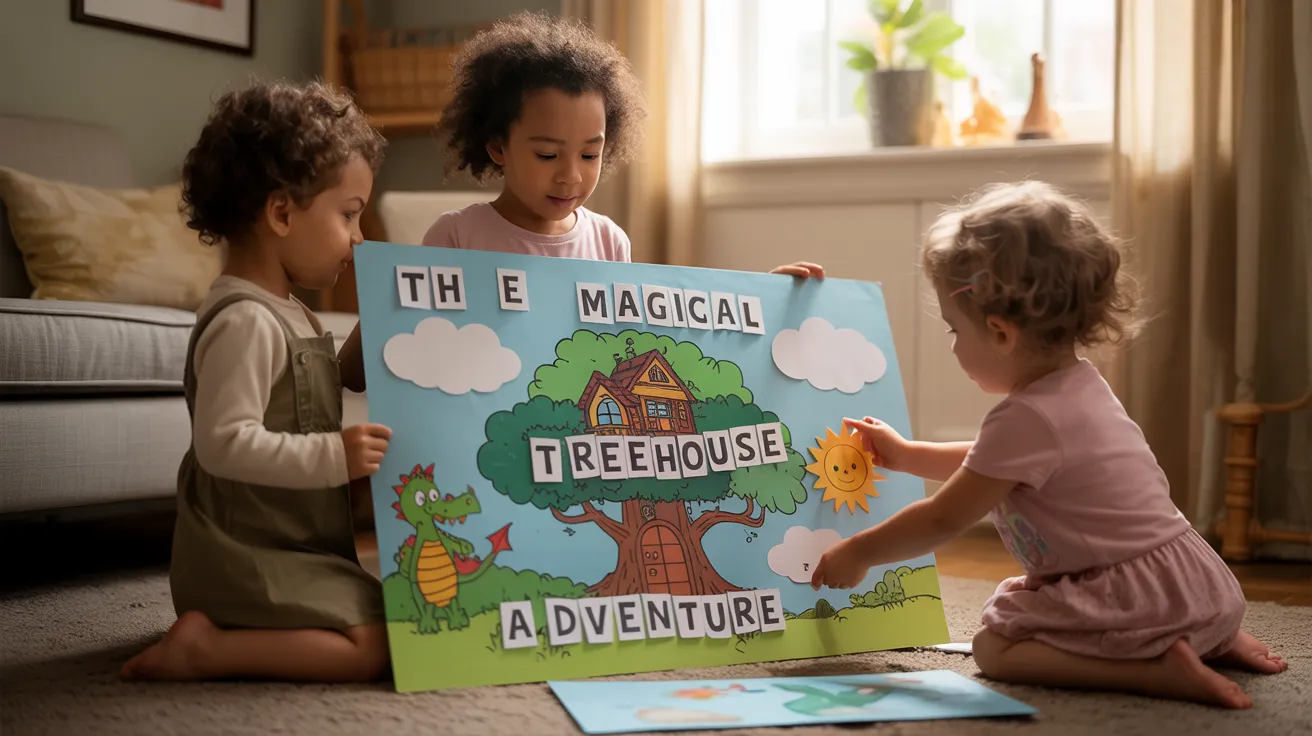
Activity 3: Digital Story Adventures
Apps like Epic!, Oxford Owl, and Raz-Kids offer interactive storybooks with audio narration, highlighted text, and comprehension quizzes. These platforms are especially helpful for English language learners who benefit from listening while reading.
According to studies, children using digital reading platforms show a 25–30% improvement in reading fluency over 8 weeks compared to traditional worksheets.
These one-sitting stories keep engagement high and let kids watch, listen, and read all at once.
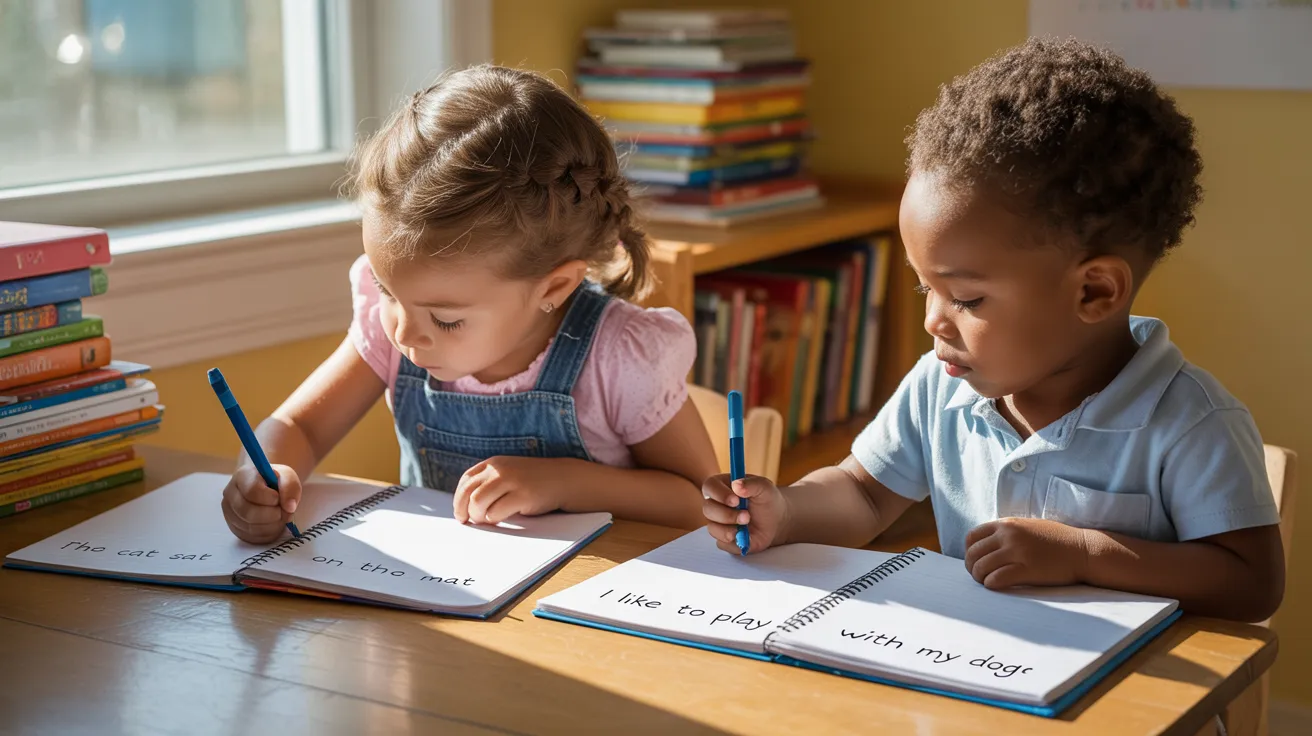
Benefits of English Story Reading for Young Learners
English story reading is more than just entertainment. It’s a complete language learning package. It helps children:
Understand sentence patterns and grammar
Hear proper pronunciation and intonation
Learn new words and how to use them
Discover different cultures and values
Expand imagination and empathy
Stories with animals, fantasy, and classic tales are especially useful for teaching vocabulary and conversation skills. They take children into the imaginary world and light up their creative brain wires.
Research from the International Literacy Association confirms that children exposed to daily reading in a second language show stronger progress in oral communication and comprehension than those learning through grammar drills alone.
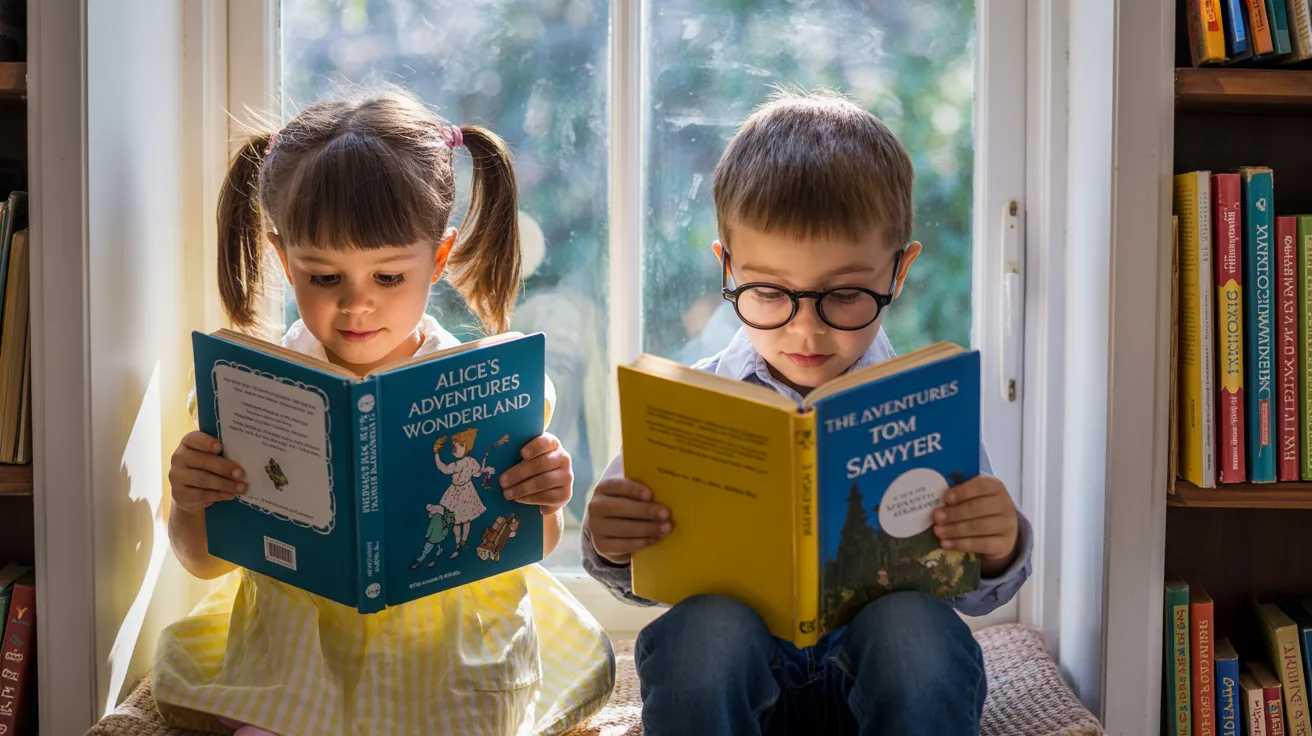
How to Choose the Right Online English Classes for Your Child
By now, you must be confused about choosing the right online classes for your kid. Well, not all online classes are created equal. Here’s what to look for once you decide that your child should get English grooming:
Age-appropriate Content: Younger kids benefit from rhymes, songs, and storytelling. Older kids may enjoy role-plays and project-based learning.
Certified Instructors: Look for platforms like CodeYoungthat employ trained educators who specialize in English language learners.
Small Group Sizes: More interaction, more speaking opportunities.
Balanced Curriculum: A mix of vocabulary, listening, speaking, reading short stories, and grammar.
Bonus tip: Choose classes that offer feedback and track your child’s progress.
Conclusion
Helping your child learn English at home doesn't require perfect grammar or hours of study. All it takes is a little time, lots of love, and the willingness to explore the world of English together.
Whether it’s through a classic tale, a funny modern story, or a digital storybook adventure, every moment you spend makes a difference. Your support, be it a bedtime story, a drawing, or a fun chat, teaches your child that learning can be joyful.
So build that English nook, read a good story, make up silly rhymes, and don’t be afraid to talk, laugh, and learn alongside your child.
Some examples of English short stories for kids:
The Very Hungry Caterpillar– It introduces food-related vocabulary and days of the week
Goodnight Moon– It supports bedtime routines and simple sentence structure
The Happy Prince by Oscar Wilde– It offers emotional depth and hidden meaning for older kids
Stories by Shirley Jackson, Ray Bradbury, and Jack London are excellent for upper intermediate learners looking for deeper context and challenge.
English Story Reading - FAQs
How can English story reading help my child learn the language?
English story reading helps your child hear how real English sounds. It teaches new words in a fun, natural way and builds understanding through pictures and context. Plus, it’s a great way to spend time together and make learning feel like a story, not a lesson.
What are some examples of English short stories for kids?
Start with fun and simple stories like 'The Very Hungry Caterpillar' or 'Goodnight Moon.' These classic stories use easy words and rhythm, making them perfect for beginners. You can also try modern stories and digital books with audio to keep learning exciting and fresh.
How do online classes make it easier for kids to learn to read English?
Online English classes use videos, pictures, and fun voice games to help kids read. Teachers guide them with clear instructions and interactive activities, so learning feels more like play. It’s a relaxed, fun way to build reading skills from home.
How can I create a short story for learning English with my child?
Making a short story for learning English is easy and fun! Pick your child’s favorite animal or superhero, add a simple problem, and draw or write the ending together. Use basic words and sentences. It’s a great way to learn while being creative.
Are there English classes for 3-year-olds online?
Yes! There are many beginner-friendly classes for toddlers. These use songs, stories, and games to introduce new vocabulary in a playful way. Young kids love to watch, listen, and repeat, making these classes a fun and gentle start to English learning.
Which is the best English story to read?
The best English story is one your child enjoys and connects with. For English language learners, start with short stories that are fun, simple, and relatable. A good story, like 'The Happy Prince' or 'The Gift of the Magi' helps kids explore emotions, learn from characters, and relate stories to their own lives.
How to get from B2 to C1 in English?
Moving from B2 to C1 takes consistent practice and deeper engagement. Try reading short stories, essays, and even a novel with complex ideas. Talk about real topics, write your thoughts, and listen to native speakers. Focus on using English in your own life, that’s how the language learning process becomes more natural and fluent.
What is the best English book for reading?
The best English book is one that matches your level and interests. For learners, short stories or a light novel with familiar themes work well. Stories that include everyday language, interesting characters, and a bit of history help you stay engaged and finally enjoy the language learning process while building new vocabulary.
Can I read short stories online for free?
Yes, there are many websites where you can read short stories online for free. Sites like Project Gutenberg and American Literature offer hundreds of stories for English language learners. These are perfect for practicing reading, learning about history, and getting inspired by characters who feel like friends from different places and cultures.